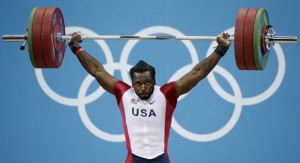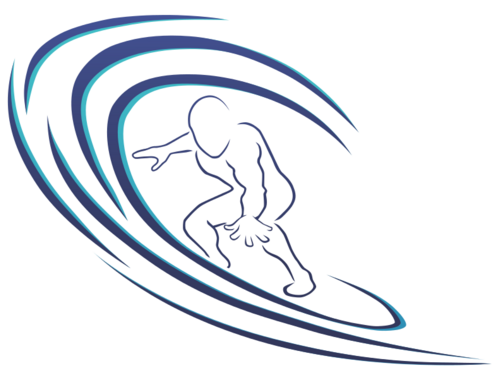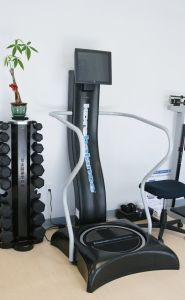Core Stabilization
By strengthening the muscle of the core, patients can decrease risk of injury and improve everyday movement and muscular function.
Within the last decade, there has been increased focus on the body’s “core.” Contrary to popular belief, however, the core is composed of more musculature than just the abdominal muscles and, therefore, has multiple functions that contribute to our daily lives. As a clinic that takes a whole-body approach in the treatment of musculoskeletal injuries and disorders, Pacific Coast Sports Medicine regards core stabilization as an important foundation in a patient’s rehabilitation or strengthening program.
What is the core?
 The core can be thought of as the central “box” structure of the body. It is made up of the abdominal muscles in the front and sides of the trunk, the paraspinal and gluteal muscles in the back, the diaphragm as the roof, and the pelvic floor and hip musculature as the bottom. Working synergistically with one another, the muscles of the core facilitate “the transfer of torques and angular momentum between the lower and upper extremities” (2). Movements both small and large—from standing up from a seated position to performing a complex gymnastics maneuver—involve the core, ultimately functioning like a corset to stabilize the spine (6).
The core can be thought of as the central “box” structure of the body. It is made up of the abdominal muscles in the front and sides of the trunk, the paraspinal and gluteal muscles in the back, the diaphragm as the roof, and the pelvic floor and hip musculature as the bottom. Working synergistically with one another, the muscles of the core facilitate “the transfer of torques and angular momentum between the lower and upper extremities” (2). Movements both small and large—from standing up from a seated position to performing a complex gymnastics maneuver—involve the core, ultimately functioning like a corset to stabilize the spine (6).
Why is core stabilization important?
 Core instability can negatively affect posture, mobility, and balance, contribute to chronic injury such as low back pain, and lead to decreased sports performance. By implementing core stability exercises within a patient’s program, core strength and endurance can be improved in order to prevent risk of injury and enhance functionality in both simple and complex movements.
Core instability can negatively affect posture, mobility, and balance, contribute to chronic injury such as low back pain, and lead to decreased sports performance. By implementing core stability exercises within a patient’s program, core strength and endurance can be improved in order to prevent risk of injury and enhance functionality in both simple and complex movements.
Core stabilization strength training includes exercises that work the muscles of the patient’s trunk and challenge their postural control. These exercises often include equipment or technology that enhances the objective of maintaining balance or overcoming an unstable condition throughout the exercise. For example, some core exercises can be completed on a Swiss ball that challenges balance and results in the activation of core muscles and increased neuromuscular control to keep from falling (1,4). These exercises strengthen the core musculature, thereby increasing core stability.
Core stabilization programs have demonstrated to be effective in reducing injury and improving strength and muscle function.
- Significant risk reduction of ankle sprains among adolescent athletes (5)
- Increasing trunk muscle strength, thus decreasing fall risk in older adults (3)
- Significant improvements in knee proprioception as well as trunk flexion and extension strength when compared to control groups (1)
- Greater reductions in all pain-related outcomes in patients with low back pain compared to the control group after 10 weeks of core stabilization training and also three months after the program (7)
Clinical professionals at Pacific Coast Sports Medicine ensure safe and effective core stabilization exercise regimens. Patients have access to state-of-the-art technology systems such as Korebalance and Power Plate to further enhance core stability, balance, and muscle strength. Whether you are recovering from an injury, looking to improve your sports performance, or trying to prevent an injury from occurring, core stabilization programs at Pacific Coast Sports Medicine can facilitate the development of a stronger, stable core.
- Cu? M, Ak E, Özdemir RA, Korkusuz F, Behm DG. The effect of instability training on knee joint proprioception and core strength. J Sports Sci Med. 2012;11(3):468-74.
- (3)Granacher et al. Effects of core strength training using stable versus unstable surfaces on physical fitness in adolescents: a randomized controlled trial. BMC Sports Sci Med Rehabil. 2014;6(1):40.
- (1)Granacher U, Gollhofer A, Hortobágyi T, Kressig RW, Muehlbauer T. The importance of trunk muscle strength for balance, functional performance, and fall prevention in seniors: a systematic review. Sports Med. 2013;43(7):627-41.
- (2)Granacher U, Lacroix A, Muehlbauer T, Roettger K, Gollhofer A. Effects of core instability strength training on trunk muscle strength, spinal mobility, dynamic balance and functional mobility in older adults. Gerontology. 2013;59(2):105-13.
- Hübscher et al. Neuromuscular training for sports injury prevention: a systematic review. Med Sci Sports Exerc. 2010;42(3):413-21.
- Huxel Bliven KC, Anderson BE. Core stability training for injury prevention. Sports Health. 2013;5(6):514-22.
- Puntumetakul R, Areeudomwong P, Emasithi A, Yamauchi J. Effect of 10-week core stabilization exercise training and detraining on pain-related outcomes in patients with clinical lumbar instability. Patient Prefer Adherence. 2013;7:1189-99.

